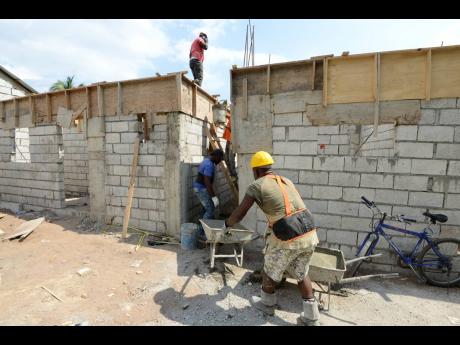Editorial | Tackling urban renewal
While this newspaper appreciates the breadth of the housing development highlighted by Prime Minister Andrew Holness in the Budget Debate, we are disappointed that a major, aggressive and coordinated programme for the transformation of inner-city communities was not the centrepiece of his government’s shelter policy.
It is not that the Government has no programme for urban renewal. Mr Holness sketched the outlines of a few, including the expansion of the St Paul’s Lane Development in his West Central St Andrew constituency from 24 to 36 units. Additionally, the National Housing Trust (NHT) has budgeted J$9 billion this fiscal year for housing projects across swathes of decayed urban communities islandwide.
However, it is not our sense that there is a concentration of effort, or projects of scale that would have the demonstration effect that something truly transformative is under way. In fact, notwithstanding his indication that the government might now be more focused on seeking out marginal lands for housing developments, the prime minister remains committed to pushing through greenfield projects, including that on the island’s “most fertile …A1 soil” at Bernard Lodge, the former sugar plantation on the St Catherine plain.
But it is not only the Government’s urban/inner-city renewal ideas that we believe lacks the necessary sense of urgency. In his intervention in the Budget debate, the opposition leader, Mark Golding, touched on a range of housing/shelter projects to be undertaken by his People’s National Party if it wins next year’s general election. However, Mr Golding did not specifically address the question of the physical transformation of inner-city Jamaica.
NOT EASY TO SOLVE
This newspaper is, of course, aware that the crisis of Jamaica’s urban blight is not easy to solve. Its scale is monumental – as a drive through almost any urban area will reveal.
Particularly in the Kingston and St Andrew metropolitan region and nearby parish of St Catherine, well-kept neighbourhoods are hardly ever more than a few hundred metres from gritty communities or pockets of slums, where several people reside in tenements with few facilities or limited services. Many of those residents make up a not insignificant portion of the estimated one-third of Jamaicans (around 900,000 people) who either squat or live in informal settlements.
The primary response of Jamaican governments to the shelter problem has been to promote greenfield developments, often encroaching on the island’s limited agricultural quality lands (19 per cent of Jamaica’s total acreage), as is the case with the proposed new city at Bernard Lodge. This march onto agricultural land has become increasingly stark as climate change and global warming, as well as supply chain disruptions, raise for countries, especially small, vulnerable ones like Jamaica, issues of food insecurity.
Another problem with greenfield developments, usually, is the need for the buildout of supporting infrastructure – connection to services like schools, hospitals and government offices.
INNER-CITY COMMUNITIES
Generally, while they may be rundown, inner-city communities enjoy basic infrastructure, including roads, water, and, in some cases, connections to sewage systems. Some of the buildings still have decent bones. However, many of the people who reside in inner-city communities, even if they ‘own’ the properties in which they live, may not have titles to them, so are unable to collateralise their value. Neither can they afford, or themselves navigate, the complicated and costly legal processes of achieving titles.
As those residents who can afford to join the trek to the greenfield developments, poorer people stay put, perpetuating the cycle of deprivation and decay, especially among young people, and antisocial behaviour. It is not surprising that these communities tend to have high rates of crime, are the major recruiting grounds for gangs, or have remained enclaves of political exclusion with factional no-go areas.
After the 2020 general election, when Prime Minister Holness created a new super ministry with ‘Urban Renewal’ in its title and Pearnel Charles Jr as the minister, this newspaper had hoped it signalled a major, concerted and sustained assault on the crisis of urban decay. Instead, not only was that ministry quickly disbanded, but the Government’s urban/inner-city initiatives appear piecemeal and disjointed, notwithstanding that large amounts of money that, cumulatively, may be assigned to them.
We suggest a reset.
The Government’s urban renewal budget should be consolidated and topped up with some of the money now earmarked by the NHT for regular mortgages. That programme should be sustained for, say, a decade.
Government resources should be leveraged to raise additional capital from private-sector and international development partners for urban renewal projects at scale, to which community owners can contribute existing properties and sweat equity. Areas for renewal can be rolled out on a phased basis, but must be sufficiently large for it to be clear that something has changed.
This approach is a substantially heavier lift than greenfield projects and small bits of renewal. It demands great planning and the mobilisation of communities and their residents. But its return would not be only economic. It will also carry great social value.

